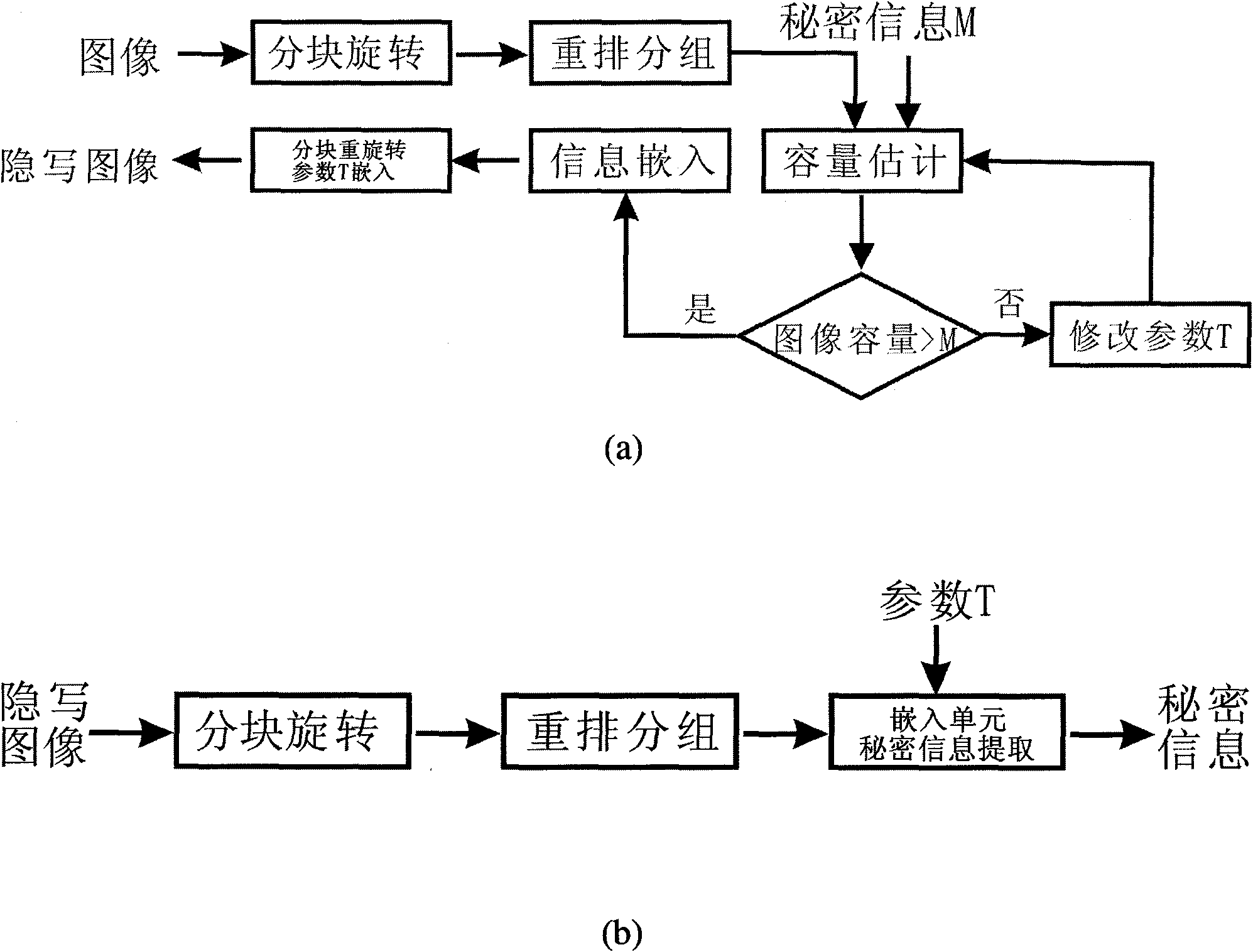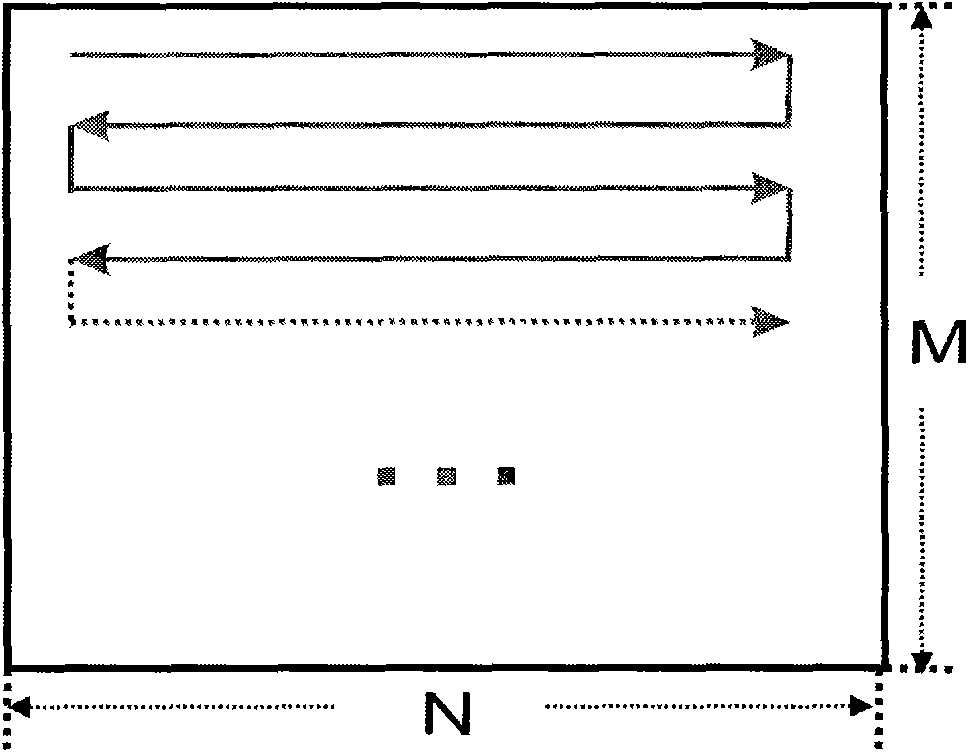Adaptive spatial steganographic method based on adjacent pixel difference
An adjacent pixel, self-adaptive technology, applied in image data processing, image data processing, instruments, etc., can solve problems such as poor self-adaptive ability and poor safety performance
- Summary
- Abstract
- Description
- Claims
- Application Information
AI Technical Summary
Problems solved by technology
Method used
Image
Examples
Embodiment Construction
[0057] The present invention will be further described below in conjunction with the accompanying drawings.
[0058] figure 1 What is shown is a schematic diagram of the algorithm flow of the embedding and extraction of secret information in the present invention.
[0059] The embedding process of the secret information includes steps: (11) image block rotation; (12) image data rearrangement and grouping; (13) estimating the embedding capacity of the image; (14) modifying the middle pixel of the embedding unit to realize information embedding; (15) ) embedding of image re-rotation and threshold T.
[0060] Each step is described in detail as follows:
[0061] (11) Image block rotation
[0062] Suppose the image to be detected is I, and its size is M×N. like figure 2 As shown, at first I is decomposed into Bz×Bz (setting Bz=6) small block Blk(j) of no overlapping area, j = 1,2 , . . . , ...
PUM
 Login to View More
Login to View More Abstract
Description
Claims
Application Information
 Login to View More
Login to View More - Generate Ideas
- Intellectual Property
- Life Sciences
- Materials
- Tech Scout
- Unparalleled Data Quality
- Higher Quality Content
- 60% Fewer Hallucinations
Browse by: Latest US Patents, China's latest patents, Technical Efficacy Thesaurus, Application Domain, Technology Topic, Popular Technical Reports.
© 2025 PatSnap. All rights reserved.Legal|Privacy policy|Modern Slavery Act Transparency Statement|Sitemap|About US| Contact US: help@patsnap.com



